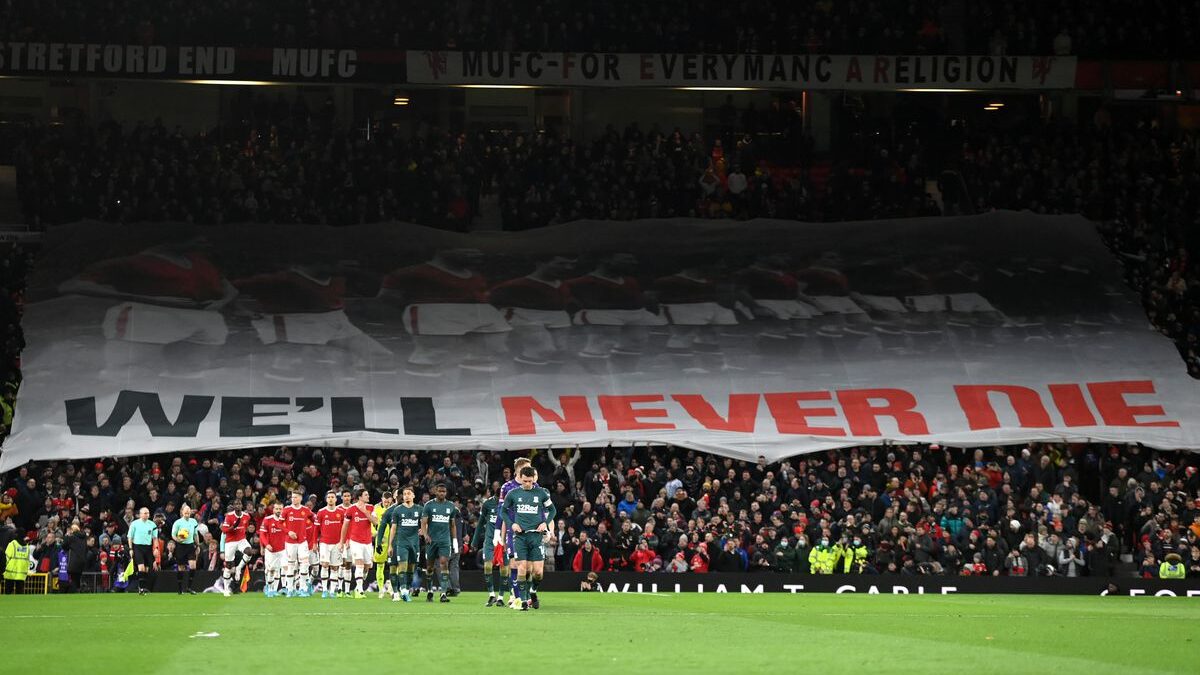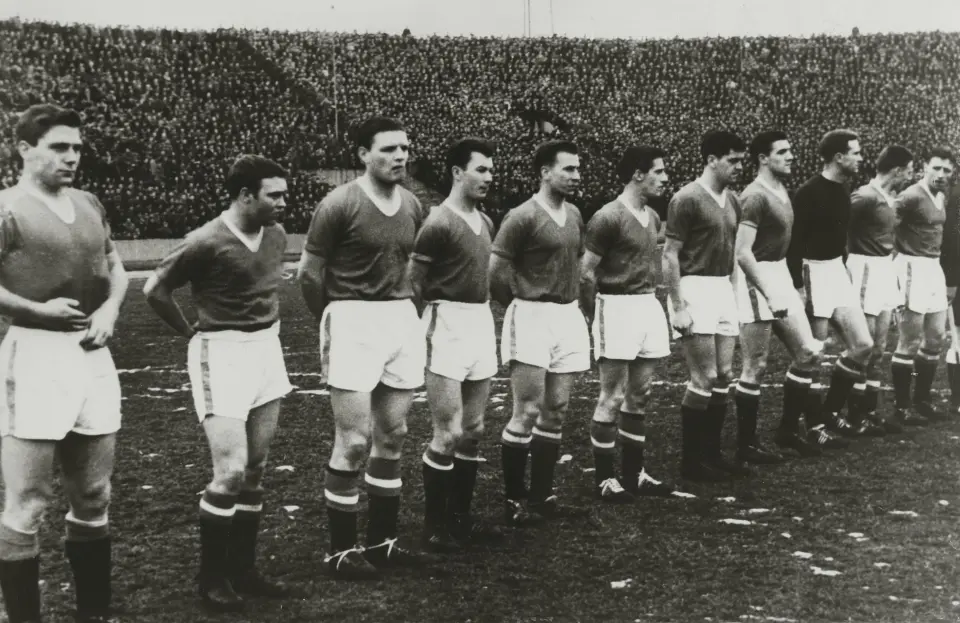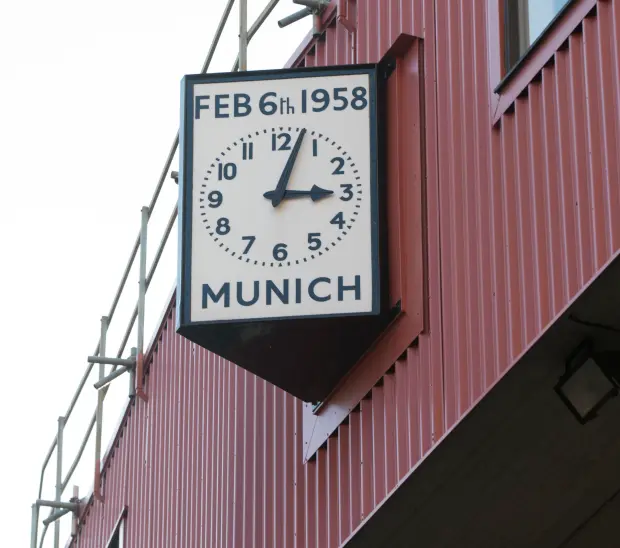The Munich Air Disaster of 1958, was one of the most tragic incidents in the world of football. It had a huge impact on football, especially on Manchester United, its fans and on Old Trafford. Every Manchester United fan carries the heavy weight of 6th February circled on their calendars with a somber heart. And why not, the accident claimed the lives of 23 people, including eight Manchester United players and three officials.

Munich Air Disaster 1958: What Exactly Happened
The Munich air disaster occurred on 6th February 1958 when British European Airways Flight 609 crashed on its third attempt to take off at Munich-Riem Airport in Munich, West Germany.
Returning from a victorious European Cup match in Belgrade, Yugoslavia (now Serbia), where they advanced to the semi-finals by eliminating Red Star Belgrade, the Manchester United team faced a tragic turn during their journey home in the Munich air disaster of 1958. Their flight, unable to make a non-stop flight from Belgrade to Manchester, stopped in Munich for refueling.
Pilots James Thain and Kenneth Rayment encountered challenges during take-off, twice aborting due to boost surging in the left engine. Despite adverse conditions and the risk of falling behind schedule, Thain opted for a third take-off attempt. As snow fell, creating slush at the runway’s end, the aircraft plowed through a fence. The impact tore off the left wing after striking a house. The tail section broke off, hitting a barn with a parked fuel truck, triggering a fire and explosion.
Amidst the chaos, Thain initiated passenger evacuation while goalkeeper Harry Gregg aided in rescuing survivors. Initial blame fell on Thain in a West German investigation, alleging failure to de-ice the wings. However, the final 1969 U.K. Board of Trade inquiry refuted this, attributing the crash to snow slush on the runway that impeded takeoff speed, absolving Captain Thain of responsibility(source).

The aircraft was carrying the Manchester United football team, nicknamed the “Busby Babes“, along with supporters and journalists.[1] There were 44 people on board, 20 of whom died at the scene. The injured, some unconscious, were taken to Munich’s Rechts der Isar Hospital, where three more died, resulting in 23 fatalities with 21 survivors.
Munich Air Disaster 1958: Forever remembered
As stated earlier in the post, 23 people died including eight Manchester United players and three officials.
The incident was a shocker to the club, fans, and the entire football community around the globe.

The eight players who perished were Geoff Bent (aged 25), Roger Byrne (28), Eddie Colman (21), Duncan Edwards (21), Mark Jones (24), David Pegg (22), Tommy Taylor (26) and Liam Whelan (22). Edwards, considered by many to be the finest player of his generation, died 15 days after the accident.
The three club officials who were killed were secretary Walter Crickmer, trainer Tom Curry, and coach Bert Whalley.
Eight journalists died – Alf Clarke, Donny Davies, George Follows, Tom Jackson, Archie Ledbrooke, Henry Rose, Eric Thompson, and former Manchester City goalkeeper Frank Swift. Aircraft captain Ken Rayment, fellow crew member Tom Cable, travel agent Bela Miklos, and supporter Willie Satinoff, a friend of United manager Sir Matt Busby, were also victims of the tragedy.
The Frozen Munich Disaster Clock

In Old Trafford, a special clock stopped ticking, always remembering the Munich Air Disaster of 1958. More than a timepiece, it actively serves as a tribute frozen at the exact moment of that somber event. Placed with purpose, it reminds everyone of the days when lives were changed. It’s not just a clock; it’s a frozen moment, a symbol saying, “We won’t forget.” In the stadium, fans and players actively notice this silent reminder. It’s not just part of the stadium; it’s a speaking symbol telling the unforgettable story of a day etched in Manchester United’s history.